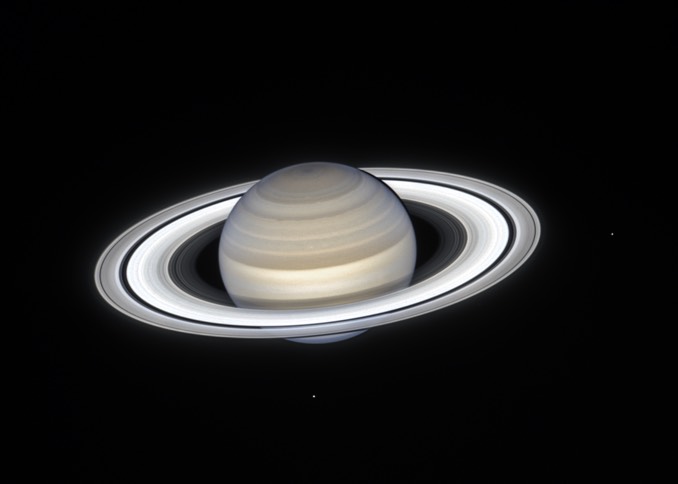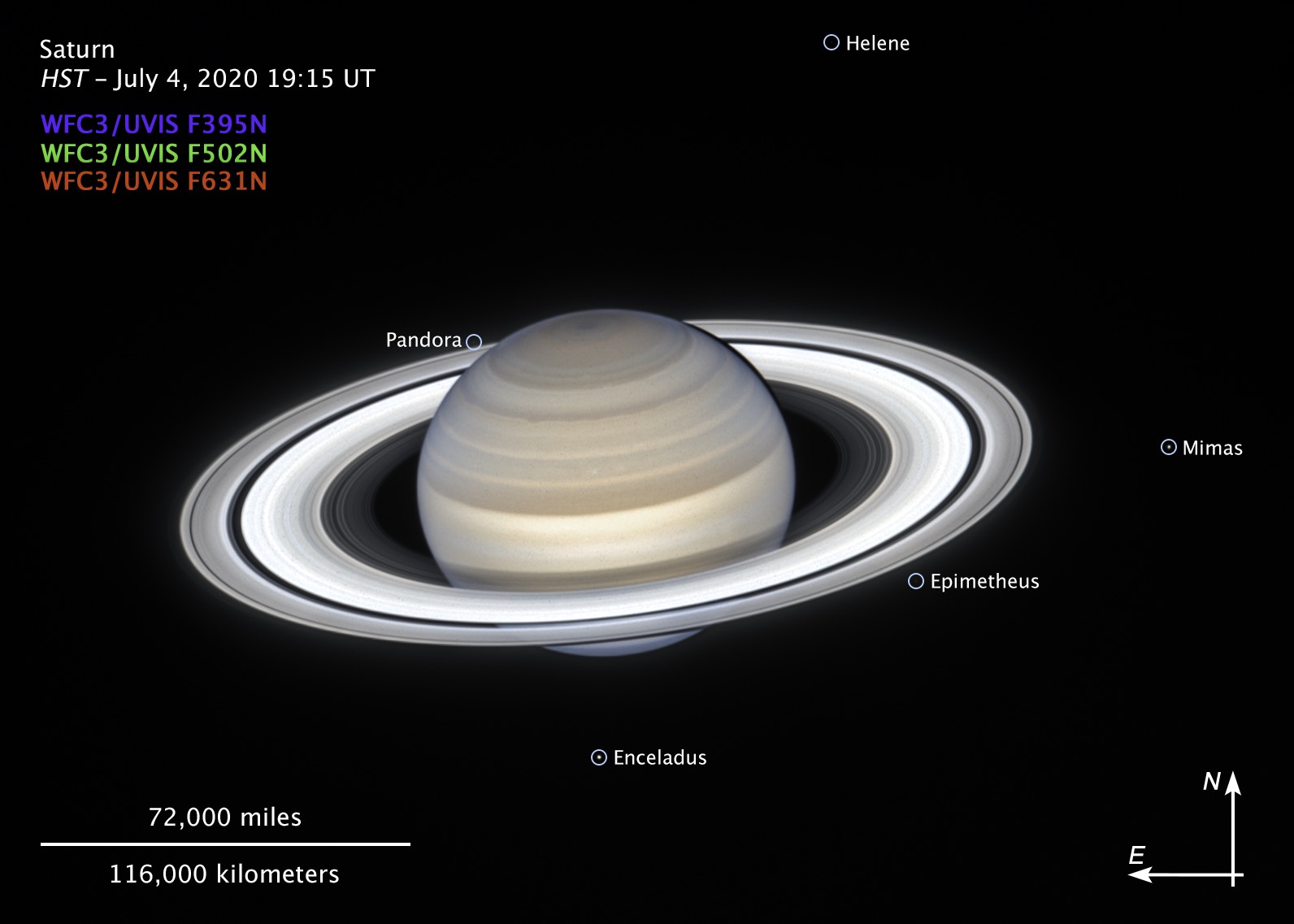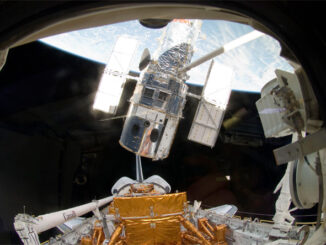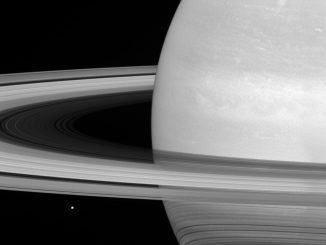Every time Earth catches up and passes Saturn, putting the two planets at their closest – at opposition – as they circle the Sun, astronomers use the Hubble Space Telescope to check in on the ringed gas giant. This year, on 4 July, Hubble captured a spectacular view of Saturn and its rings as the planet’s northern hemisphere was being warmed by the summertime Sun. Atmospheric banding in the northern hemisphere remains pronounced, as it was in 2019, with several bands changing colour from year to year. The planet’s atmosphere, made up mostly of hydrogen and helium, along with trace amount of ammonia, methane, water vapour and hydrocarbons, has a mostly yellowish-brown hue with a reddish haze at northern latitudes. The haze may be the result of solar heating or changes in the amounts of photochemical haze.





